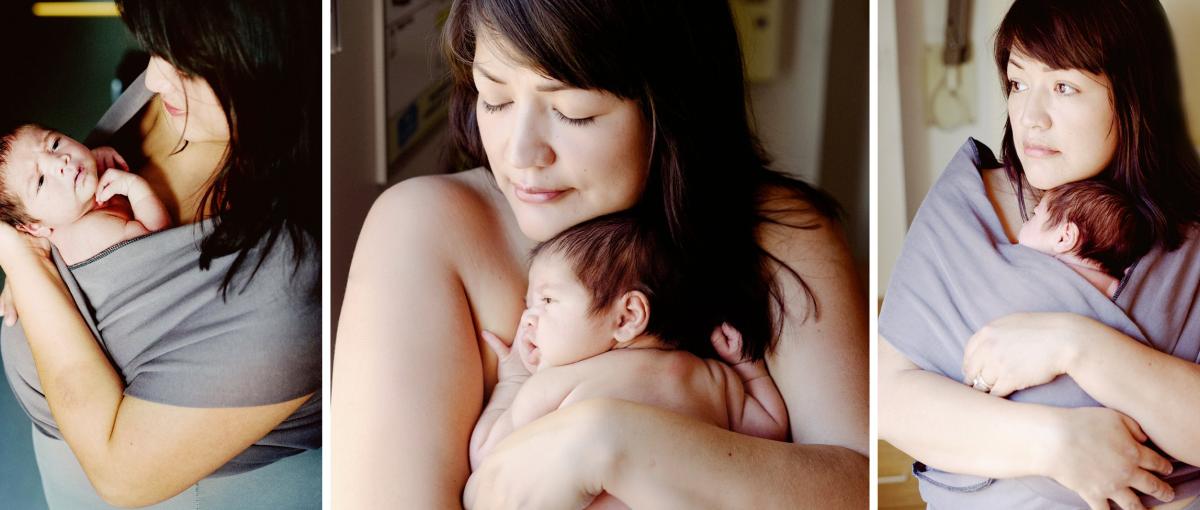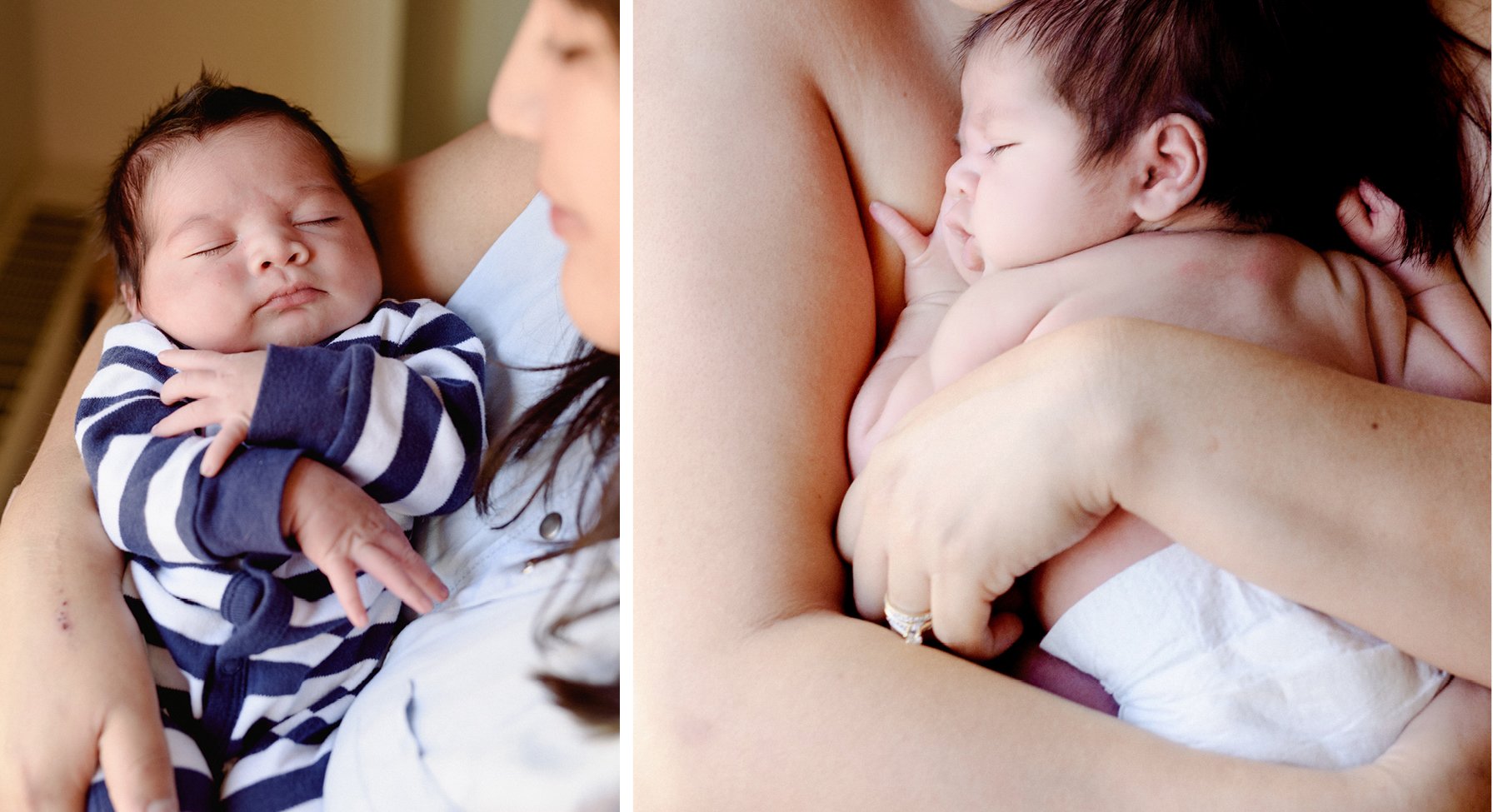Keeping moms and newborns together
Rooming-in approach helps infants going through opioid withdrawal

April 25, 2018
By Esther Kim, Communications Advisor, Covenant Health
You would never know by looking at Owen Todd that he had a rocky start to life.
“It was really scary because my baby was shaking when he was born,” says Vanessa Todd, Owen’s mother.
The shaking Owen was experiencing when he was born in October 2016 is a common symptom shown by babies exposed to opioids while in their mother’s womb. High-pitched crying is also common to babies born with neonatal abstinence syndrome (NAS).
With opioid use on the rise, an increasing number of babies need special support in hospitals.
As a result, the Grey Nuns Community Hospital has developed a rooming-in approach where moms and babies are kept together to manage a baby’s withdrawal symptoms, rather than the traditional approach of separating the two.
Skin-to-skin contact
“The postpartum rooming-in approach has been highly successful. We have seen a significant decrease in medication used to treat NAS as well as a significant increase in breastfeeding among these women,” says Karen Foss, Neonatal Nurse Practitioner, Women’s and Child Health Program at Covenant Health.
Karen says during the pilot period, babies requiring morphine to manage withdrawal went from 67 per cent to 12 per cent and breastfeeding rates increased to 71 per cent from 22 per cent.
The Canadian Institute for Health Information reported that an estimated 0.51 per cent of all infants born in Canada had NAS. "To put this in perspective, there are over 50,000 babies born in Alberta each year. This means that approximately 255 babies are born in Alberta each year with NAS," says Karen.
In Vanessa’s case, she was prescribed Suboxone, a common medication to treat opioid dependency, after she became dependent on Tylenol 4s. Suboxone, also known as buprenorphine, and methadone are current options available to pregnant women needing opioid replacement therapy.

Vanessa Todd and her son, Owen
While on Suboxone, Vanessa became pregnant. “I wasn’t aware that the baby could show withdrawal symptoms from Suboxone,” she says.
Vanessa says Owen responded well to skin-to-skin care and in less than four days he started to show signs he was stabilizing.
Importance of rooming-in
In the past, babies born to women on opioid replacement therapy often ended up admitted to neonatal intensive care units, where babies are given morphine to manage withdrawal from the medication their moms were prescribed.
“We did not see this as the ideal approach to managing neonatal withdrawal for either the mom or the baby,” says Karen.
In 2015, the postpartum units at the Grey Nuns were involved in a pilot to test the idea that babies would less likely be admitted to NICU for morphine treatment and would be more likely to breastfeed if kept together with their moms. The rooming-in approach has now been adopted as a preferred choice for babies who experience withdrawal from in utero opioid exposure, says Karen. Since the pilot, 47 mothers have successfully completed the program.
“The goal of our rooming-in model is to provide an inclusive approach to caring for pregnant women and their babies, regardless of social and economic circumstances.”
Jody Cook, Registered Social Worker and Program Co-ordinator
Pregnant women in the program stay in the hospital for eight or more days, depending on the severity of withdrawal and symptoms. The length of stay is key for babies exposed to opioids to support moms with skin-to-skin care and breastfeeding, and to boost parents' confidence in caring for their newborn.
For methadone and buprenorphine specifically, babies can start to show signs of withdrawal three to five days after delivery. Typically, moms with near-term, low-risk pregnancies are sent home after one or two days in hospital.
Karen says there’s still more to be done to support pregnant women in opioid replacement therapy programs.
“We are working provincially to advocate for an improved standard of care not only for this group of women, but also for other groups of women with substance use disorders,” says Karen.
Owen, now 18 months old, is doing great. Vanessa credits the program for helping Owen and giving her much-needed confidence in caring for her son. “It jump-started our lives. It was just amazing.”